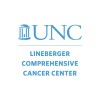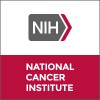
Concurrent Chemoradiotherapy With Nedaplatin Versus Cisplatin in Nasopharyngeal Carcinoma
Nasopharyngeal CarcinomaThis is a Phase III trial to study the effectiveness of nedaplatin versus cisplatin with IMRT chemoradiotherapy in treating patients with locoregionally advanced nasopharyngeal carcinoma.

De-intensification of Radiation & Chemotherapy in Low-Risk Human Papillomavirus-related Oropharyngeal...
CarcinomaSquamous Cell2 moreThe purpose of this research study is to learn about the effectiveness of using lower-intensity radiation and chemotherapy to treat human papillomavirus (HPV) associated low-risk oropharyngeal and/or unknown primary squamous cell carcinomas of the head and neck. The cure rate for this type of cancer is estimated to be high, > 90%. The standard treatment for this cancer is 7 weeks of radiation with 3 high doses of cisplatin. Sometimes surgery is performed afterwards. This standard regimen causes a lot of side effects and long term complications. This study is evaluating whether a lower dose of radiation and chemotherapy may provide a similar cure rate as the longer, more intensive standard regimen. Patients in this study will receive 1 less week of radiation and a lower weekly dose of chemotherapy followed by a limited surgical evaluation.

Safety and Efficacy Study of Icotinib With Intensity-modulated Radiotherapy in Nasopharyngeal Carcinoma...
Nasopharyngeal CarcinomaNasopharyngeal carcinoma (NPC) is a prevalent disease in southeast of China. Radiation therapy with or without chemotherapy is a standard therapy for nasopharyngeal cancer. Cytotoxic chemotherapy plays an important role in the curative treatment of advanced NPC. However, concurrent chemoradiotherapy increased significantly local and systemic toxic effects, which may preclude many patients from proceeding with combined therapy. The epidermal growth factor receptor(EGFR) gene is amplified in 40% and EGFR protein is overexpressed in over 80% of NPC. EGFR overexpression is also associated with shorter survival following chemoradiotherapy in locoregionally advanced NPC. And some basic researches have proved that EGFR tyrosine kinase inhibitors(TKIs) could increase the radiosensitivity and reduce the epithelial-mesenchymal transition (EMT) in NPC cell line. Moreover, distant metastases has been the major cause of treatment failure in NPC. Icotinib hydrochloride is a novel oral EGFR TKIs with low mammalian toxicity(made in China). But base on toxic effects of Icotinib, it may increase toxic effects about skin and mucosa in combination therapy with Icotinib and Intensity-modulated Radiotherapy (IMRT). The prospective study will assess the tolerability and efficacy of Icotinib combined with IMRT in patients with NPC. This regimen is of great interest and it has potential to alleviate the adverse effects, improve patient compliance and better therapeutic ratio.

Axitinib (AG-013736) in Patients With Progressive, Recurrent/Metastatic Adenoid Cystic Carcinoma...
Adenoid Cystic CarcinomaThe purpose of this study is to find out what effects, good and/or bad, a new treatment called axitinib has on the patient and adenoid cystic carcinoma. This type of cancer study is called a phase II study. Axitinib is an oral medication that can interfere with cancer cell growth and reduce the growth of blood vessels around tumors. This study will help find out if axitinib is a useful drug for treating patients with adenoid cystic carcinomas. Axitinib is an experimental drug that has not yet been approved by the Food and Drug Administration for use in adenoid cystic carcinoma.

Study of TARCEVA (Erlotinib) as Adjuvant Treatment for Locally Advanced Head and Neck Squamous Cell...
Head and Neck Squamous Cell CarcinomaThis trial was originally designed and powered to compare biomarker modulation in the neo-adjuvant setting (erlotinib versus erlotinib plus sulindac versus placebo) with clinical response to erlotinib in the adjuvant setting. Since implementing the trial in late 2005, The investigators have encountered significant obstacles to implementing the adjuvant therapy phase of the trial. Barriers included: disease recurrence patient refusal to take the agent patient refusal to travel to Pittsburgh for clinical evaluations. Given the institutional challenges to implement and complete the adjuvant portion, the investigators have decided to change the primary endpoint to a biomarker modulation endpoint. To achieve this goal, the investigators determined that they needed 39 paired tissue specimens (see statistical justification below). The central hypothesis to be tested in this study is that persistent activation of parallel and/or downstream pathways contributes to tumor progression in the setting of EGFR blockade. While not all head and neck squamous cell carcinoma (HNSCC) patients will respond to EGFR targeting, the optimal strategy to identify those subjects whose tumors are sensitive to EGFR inhibition remains unknown. The primary objective is centered around the concept of tumor biomarkers which may be modulated by EGFR and Cox-2 inhibitors and may serve as future therapeutic targets for therapy. To this end patients on this trial will be randomly assigned to one of three arms to receive either Tarceva, Tarceva plus sulindac, or a placebo in the 2 week pre-operative period. A panel of biomarkers will be obtained by biopsy prior to pre-operative therapy and again at surgery. Biomarkers will be examined for modulation in the 2-week pre-operative period, for group differences, for treatment effects and for further understanding of protein signaling pathways. Sample size for the primary objective Modification of Statistical Design: The primary endpoint is the difference between pre (biopsy) and post (surgery). There are 3 hypotheses of interest: (1) placebo vs erlotinib alone, (2) placebo versus erlotinib plus sulindac, and (3) erlotinib vs erlotinib + sulindac. With a randomization in a 3:5:5 ratio, we have 88% power, alpha = .01 for an omnibus test to show between-group differences of 1 log exist. This requires 39 patients. Basically, 39 patients will provide the ability to detect a one log difference between any 2 of the 3 groups in pre-post change.

Everolimus and Pasireotide (SOM230) in Patients With Advanced or Metastatic Hepatocellular Carcinoma...
Advanced Adult Hepatocellular CarcinomaThe purpose of this study is to estimate the time to disease progression when everolimus and pasireotide are given together in patients with advanced or metastatic HCC who have not had any prior systemic therapy.

Abiraterone Acetate and Prednisone With or Without Veliparib in Treating Patients With Metastatic...
Castration-Resistant Prostate CarcinomaRecurrent Prostate Carcinoma1 moreThis randomized phase II trial studies abiraterone acetate and prednisone together with veliparib to see how well it works compared to abiraterone acetate and prednisone alone in treating patients with castration-resistant prostate cancer that has spread from the primary site to other places in the body. Androgens can cause the growth of prostate cancer cells. Antiandrogen drugs, such as abiraterone acetate, may lessen the amount of androgens made by the body. Veliparib may stop the growth of tumor cells by blocking some of the enzymes needed for cell growth. Giving abiraterone acetate together with prednisone and veliparib may work better than abiraterone acetate and prednisone alone in treating patients with castration-resistant prostate cancer.

A Phase III Study of Comparing Paclitaxel Plus 5-Fluorouracil Versus Cisplatin Plus 5-Fluorouracil...
Esophageal Squamous Cell CarcinomaThe primary objective of this trial is to study whether paclitaxel plus 5-fluorouracil has better overall survival than cisplatin plus 5-fluorouracil in chemoradiotherapy for patients with locally advanced esophageal squamous cell carcinoma. 436 patients will be recruited into this study.

Ph 1 Trial of ADI PEG 20 Plus Sorafenib to Treat Patients With Liver Cancer
Hepatocellular CarcinomaAssessment of safety and tolerability of ADI-PEG 20 in combination with sorafenib in advanced Hepatocellular Carcinoma (HCC).

Alisertib in Chemotherapy-pretreated Urothelial Cancer
Bladder CancerTransitional Cell CarcinomaBackground: Progress in developing new effective therapies in advanced and relapsing urothelial cancer has been stagnant in the last few decades and a paradigm shift is desperately needed. Aurora kinase-A overexpression has been previously described in bladder cancer and spindle checkpoint dysregulation is a common feature of human urothelial carcinoma (UC). Alisertib (Millennium Inc.) is an orally available, selective small molecule inhibitor of Aurora A kinase. Single agent and combination treatment of MLN8237 with either paclitaxel (TXL) or gemcitabine synergistically reduced UC cell viability compared with either drug alone. Hence, sequential application of MLN8237 and TXL warrants clinical investigation. Phase 1 trials of both single agent and the combination with TXL defined the recommended doses for phase 2 trials. Methods: A multistep approach will be adopted for this Phase 2 trial. A single-group run-in phase will be conducted first with Alisertib 50 mg orally BID for 7 days, followed by 14d rest until disease progression. In case of activity, a confirmatory randomized (1:1) trial of weekly TXL plus either Alisertib or Placebo will follow, incorporating efficacy and futility boundaries for early stopping. In a single-blind design, TXL will be given on days 1,8,15 q4wks at the dose of 60 mg/m2 with alisertib and 80 mg/m2 with placebo. Alisertib dose will be 40 mg BID days 1-3, 8-10 and 15-17, q4wks. In the single-arm phase, primary endpoint (EP) will be Response Evaluation Criteria in Solid Tumors (RECIST) 1.1 response-rate. 20 pts will be accrued, ≥3 responses will be required (10% type I and 20% type II error constraints). An accrual of 110 pts is foreseen in the randomized phase. Primary EP: progression-free survival (PFS), assuming an improvement in PFS from a median of 2.5 months (H0) to a median of 4.5 months (H1) (44% hazard rate reduction, 10% drop out rate). Eligibility will include diagnosis of metastatic UC and failure of 1-2 CT regimens (single-arm) or 1 prior CT only (randomized phase). A relapse within 6 months of a peri-operative CT will be counted as 1 line. Computed tomography and PET will be done every 2 cycles (2 months). Additional pharmacodynamic and translational analyses are planned on pre- post- blood and tissue samples.
